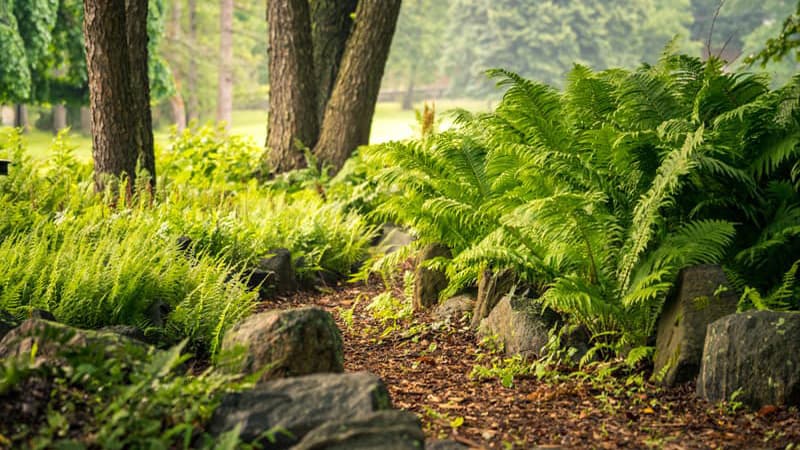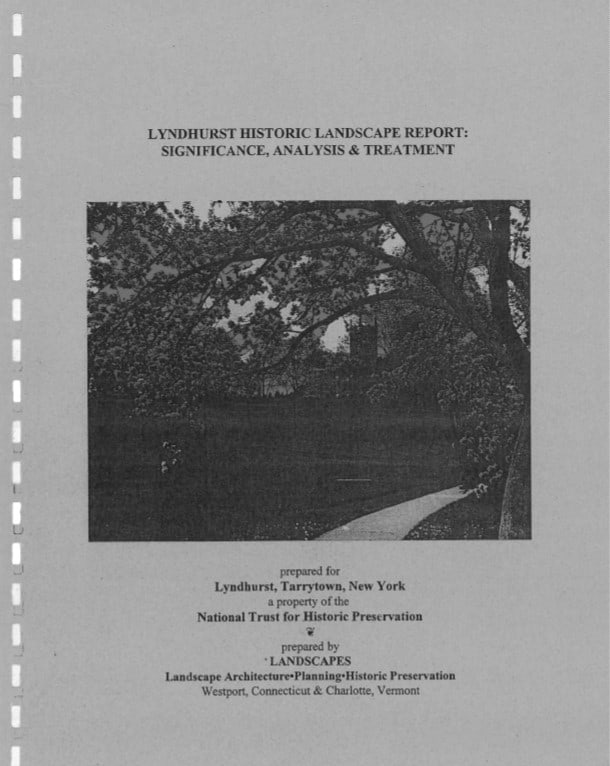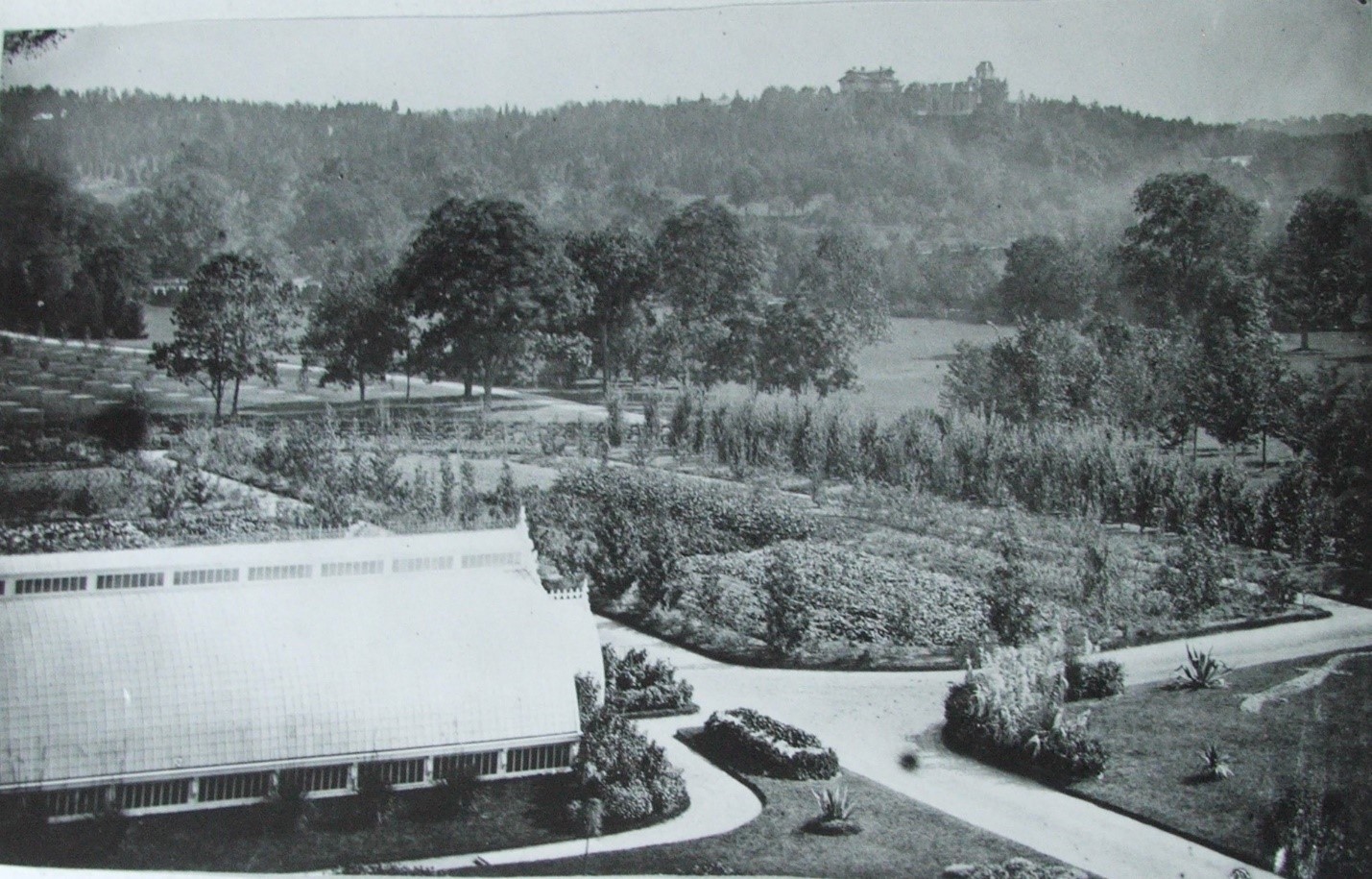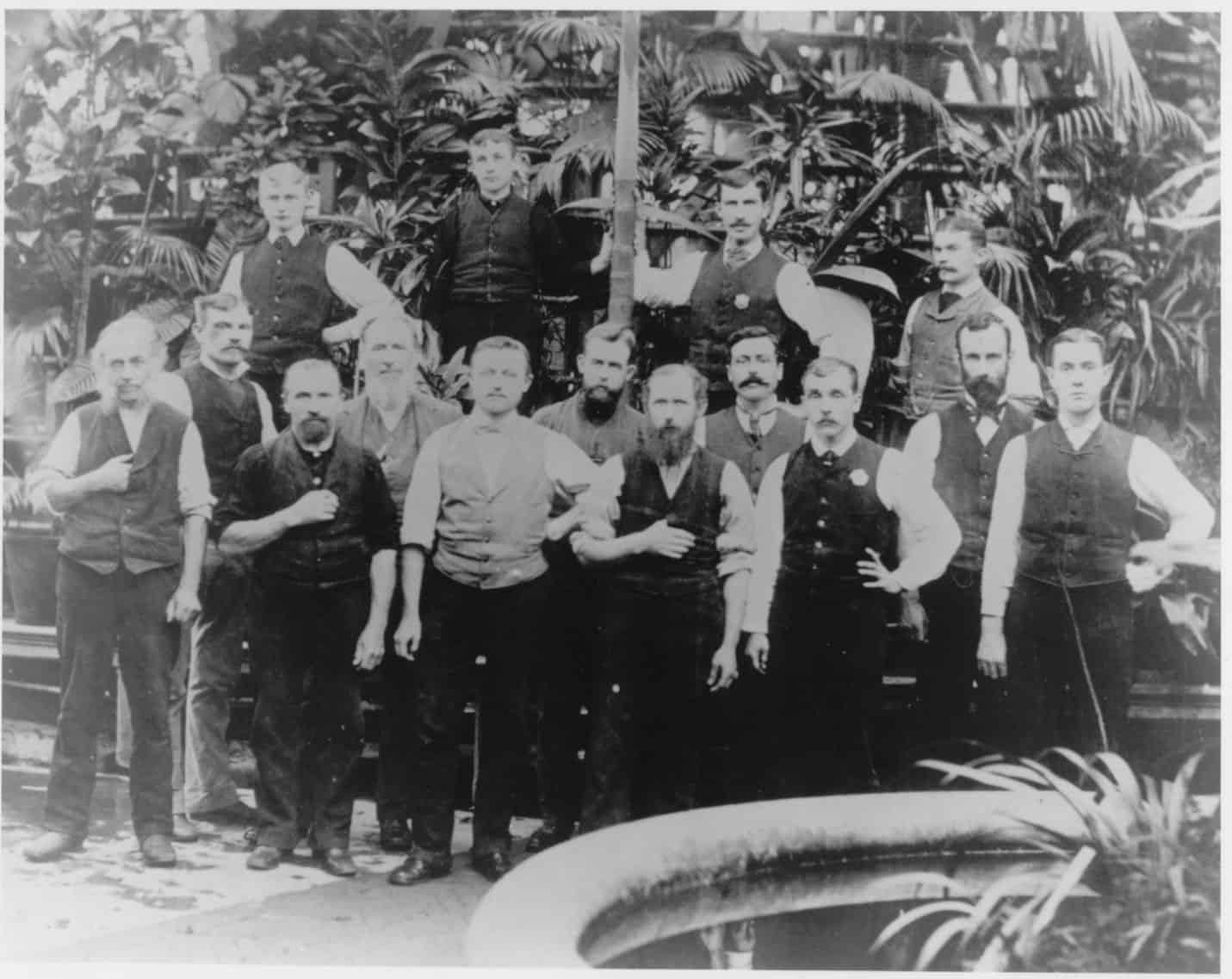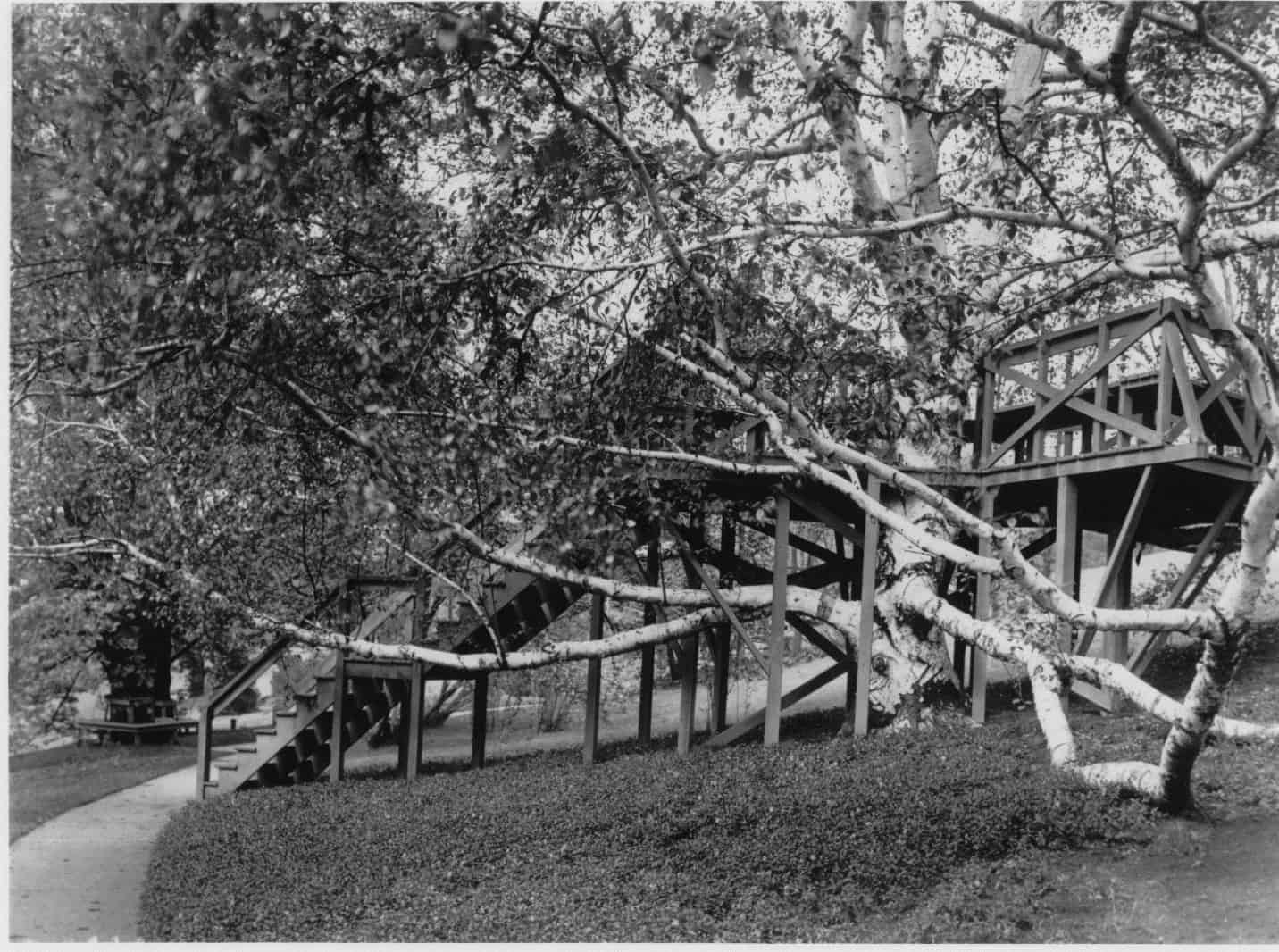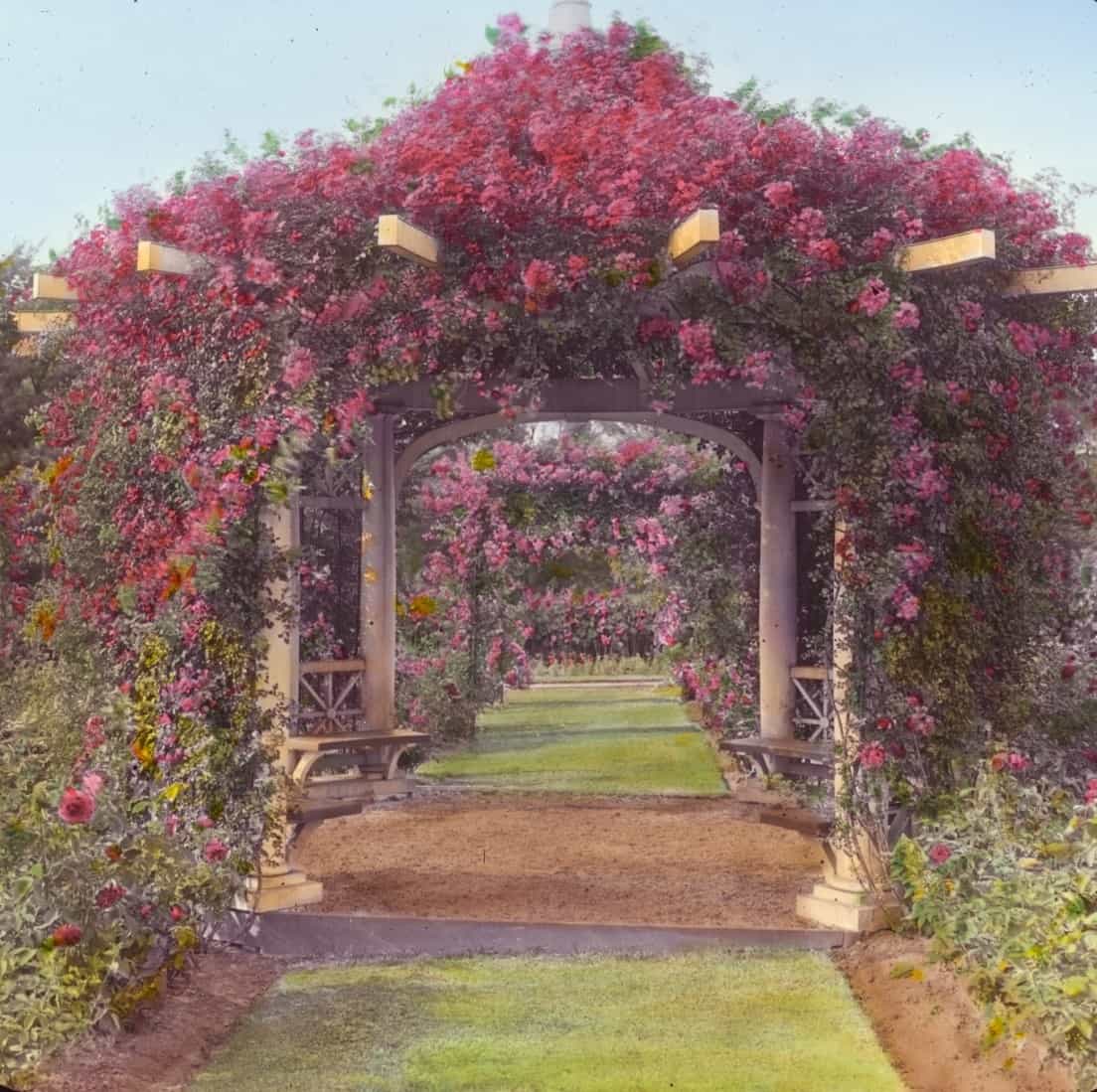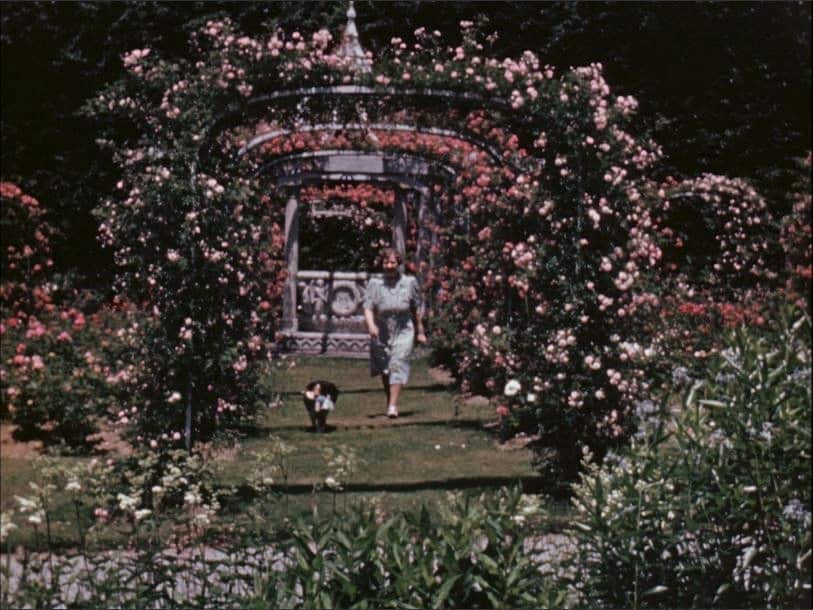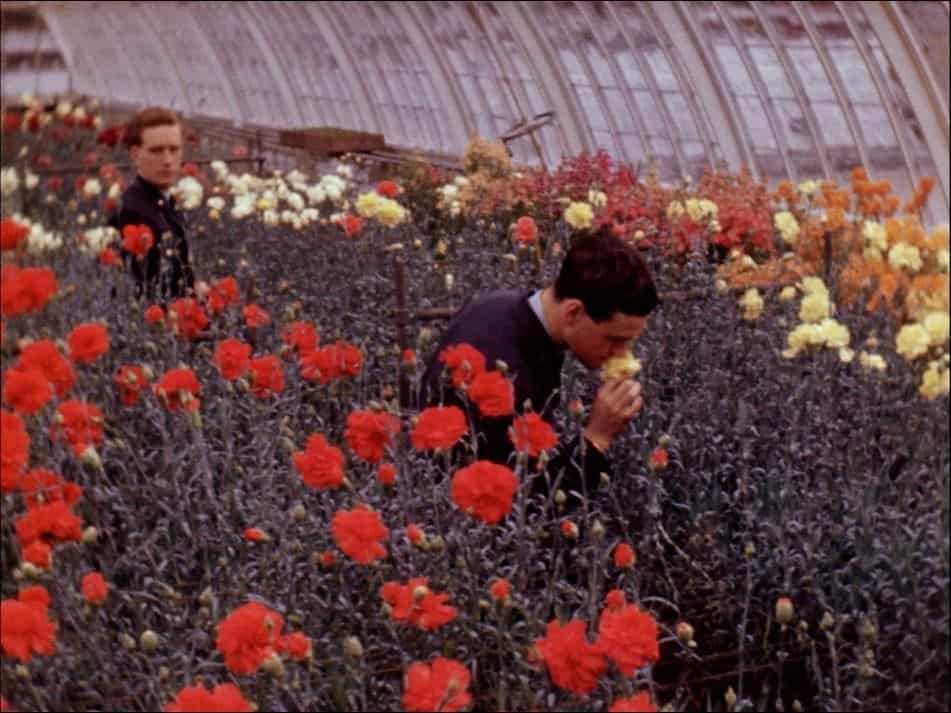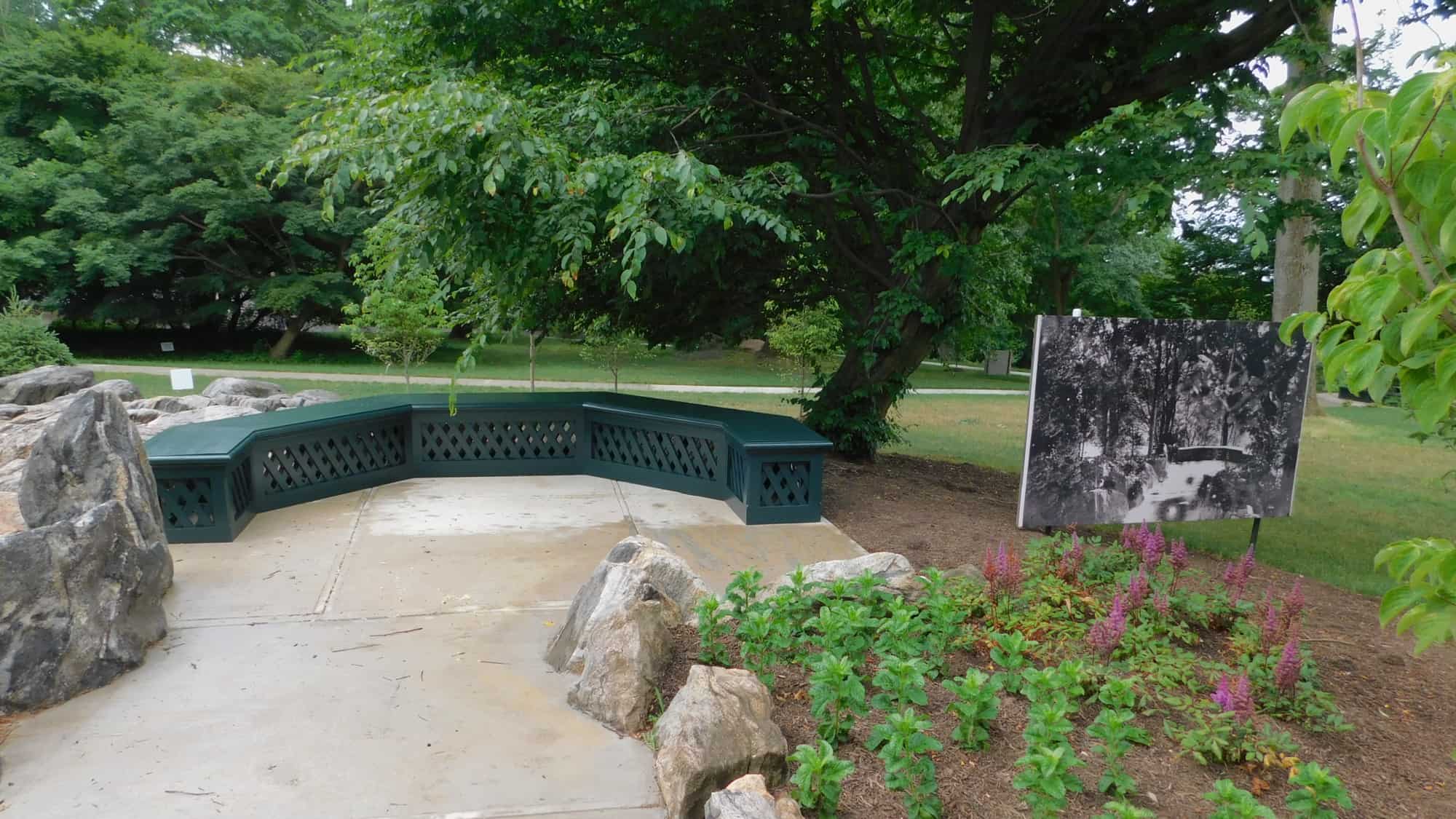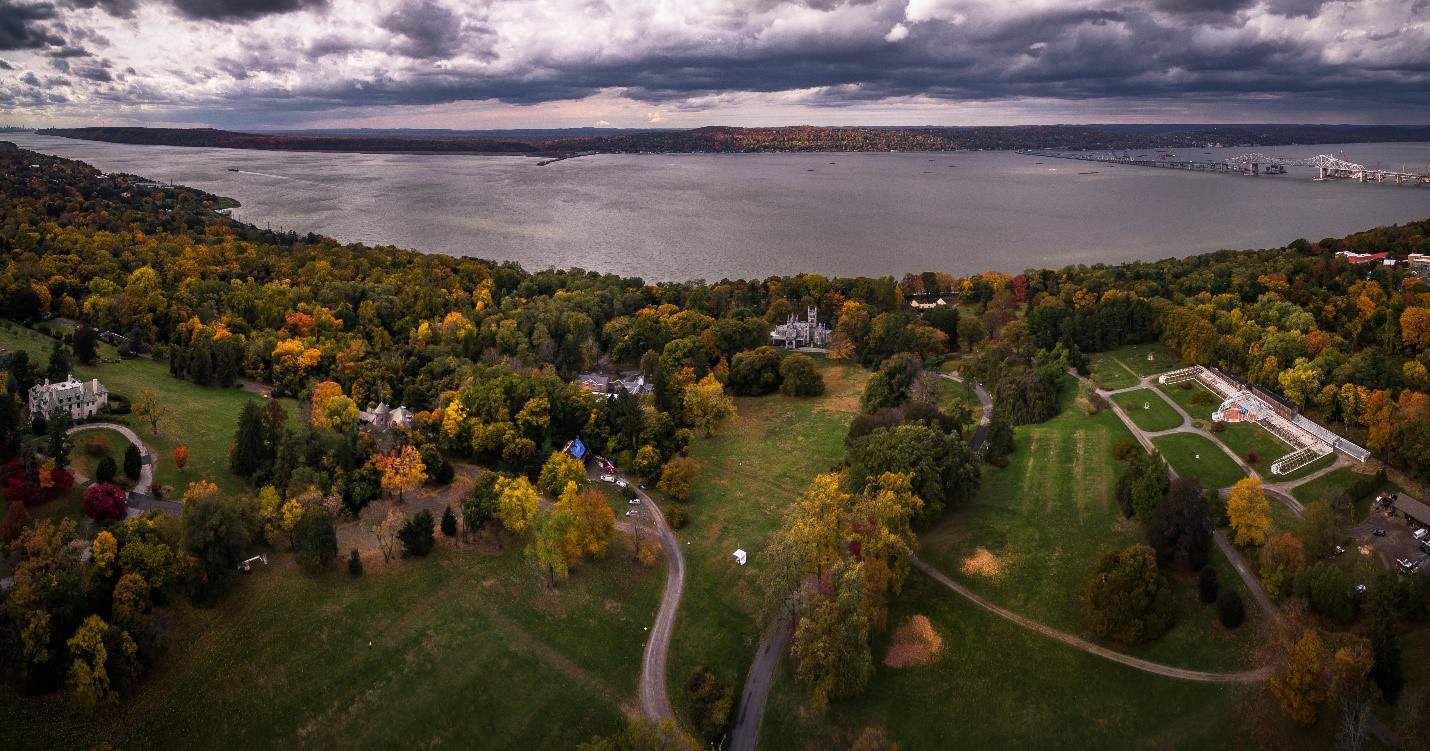History of the Landscape
Lyndhurst has one of the most significant and well-documented Hudson River landscapes. Its development spans from the 1840s to the 1960s and tracks the developing landscape fashions of the 19th and 20th centuries. Over successive generations, many existing features in the landscape were preserved with selective additions made to bring the landscape up to date. The landscape never experienced a wholesale redesign and thus presents an excellent history of developing trends in the Hudson River landscape over two centuries.
Lyndhurst’s landscape begins with the mansion’s architect Alexander Jackson Davis in the 1840s before his work with noted early landscape architect Andrew Jackson Downing. Davis considered himself as much a picturesque landscape designer as an architect and the first iteration of the landscape at Lyndhurst was designed by him and was captured in his watercolors and other drawings of the time. Six years ago, Lyndhurst staff uncovered a series of Hudson River rock viewing areas that are likely the landscape work of Davis and as such, could be an extremely rare survivor if not the only surviving example of his landscape work.
During the 1860s, Lyndhurst was further developed into a picturesque parkland landscape by Bavarian landscaper and Master Gardener, Ferdinand Mangold. Mangold brought the latest trends from European royal estates to Lyndhurst and instituted many of the trees and features we see today and would stay employed on the grounds until he died in 1902. The Lord & Burnham Company built the largest private greenhouse and subsequently likely the first fireproof greenhouse at Lyndhurst. Philanthropist and owner Helen Gould added garden elements in the early 20th century. Her younger sister, Anna Gould, Duchess of Talleyrand added garden sculptures and other marble features that still exist in Lyndhurst’s collections and are methodically being restored to the landscape.
The property is extremely well documented. Drawings and watercolors of the landscape exist from the 1840s and 50s. The landscape was photographed around 1870 and mapped to scale in 1873. A full topographical map was commissioned by Helen Gould in 1905 after the death of Master Gardener Ferdinand Mangold and landscape photographs were taken in 1920 by Mattie Edwards Hewitt are housed at the New-York Historical Society. There are aerial photographs from the 1960s and an in-depth landscape report was undertaken in the 1990s by Patricia O’Donnell and David Schuyler which utilized the memory of a landscape gardener who had been on the property since the 1960s and had worked for Anna Gould. A 30-minute 16mm film of the landscape was shot in 1942 by staff shortly before the estate fell into decline during WWII, and the film documents the lushness of the estate, including the details and color schemes of the floral bushes and perennial beds throughout the grounds.
Lyndhurst is at the center of a group of land parcels that stretch from former Lehman family estates (now owned by Montefiore Hospital) down to Washington Irving’s Sunnyside comprising approximately 150 acres of parkland directly on the Hudson River. This is one of the largest parcels of Hudson River-adjacent land in lower Westchester and these parcels are connected by both the Old Croton Aqueduct and the Westchester Riverwalk.
Over the next decade, the staff at Lyndhurst will undertake restorations and program expansions that place the landscape on an equal footing with Lyndhurst’s mansion.
We have already restored major landscape features and public amenities to tie together major trails and make Lyndhurst a destination for recreational use. We recently opened wooded parkland to our south that belongs to Westchester County and was the site of three 19th century estates there were lost to fire. This new pathway creates a seamless extension for the Westchester County Riverwalk to the Old Croton Aqueduct State Park Trail. Ultimately, restorations will include restoring and adaptively reusing the historic greenhouse and its adjacent flower gardens and groves of flowering trees.
As the second phase of landscape restoration, Lyndhurst will restore the landscape from the front of the mansion to the rose garden. Lyndhurst staff have already re-installed a series of marble benches, sculptural pieces, and a MacMonnies fountain across from the mansion in a sitting area re-created from historic photographs. In the rose garden, the central axis road will be restored with marble benches and urns at its terminus. The former perennial garden, including the Boboli Gardens fountain, will be reinstated across from the rose beds.
Plans also include restoring missing specimen trees and bushes that once lined the Lyndhurst drive and major restoration and repurposing of the iconic Lyndhurst Lord & Burnham greenhouse.
